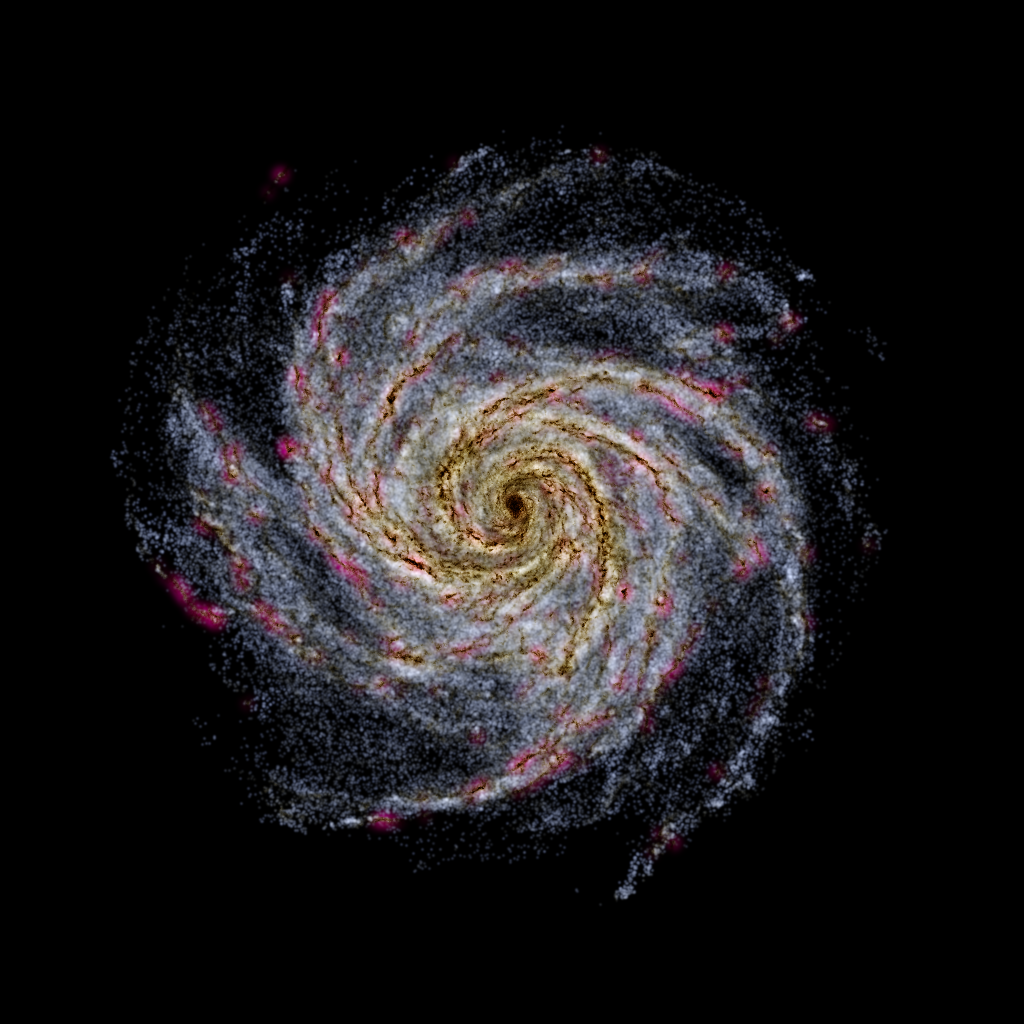the DF module¶
This method is strongly inspired from the nbodpy code from Errani: https://rerrani.github.io/code.html https://github.com/rerrani/nbopy
- class pNbody.DF.DistributionFunction(Rmin=0.01, Rmax=100, Rinf=inf, NR=10000.0, NE=10000.0, fctDensity=None, fctCumulativeMass=None, fctPotential=None, TotalMass=None, G=1.0, EPSREL=1e-06)¶
- Init()¶
Perform initialization
- PLikelihood(e, r)¶
likelihood of a particle to have an energy E at a fixed radius dP/dr * DF(e)
- checkDF()¶
check whether DF is physical - if not, check for rounding errors in integration, try increasing/decreasing NR, NE
- clean()¶
clean DF
- computeCumulativeMass()¶
compute the “normalized” cumulative mass
- computeDF()¶
Compute the DF using the set of relative energies self.E
- computeMaxLikelihood()¶
for each radius in self.R, compute the maximum likelihood
- computePLikelihoodForR(R)¶
compute the energy probability distribution for a given radius
- computeTotalMass()¶
compute the total mass function by numerical integration
- dPdr(e, r)¶
phase space volume element per energy accessible at given energy e and fixed radius r sqrt( 2(psi-e) ) r^2 see BT, integrand of Eq 4.56
- sample(N, Ndraw, irand=0)¶
N : number of particles to draw Ndraw : number of random numbers drawn at a time
return pos and vel
- save(name, ftype, ptype, u)¶
save the model
- setCumulativeMassfct()¶
define the “normalized” cumulative mass function (direct integration)
- setDFfct()¶
define the distribution function through the Eddington formula. Note that we assume dnu/dpsi equal to 0.
- setEnergyBins(log=False)¶
define a list of energy, from max(Psi) (R=Rmin) to Emax/NE (avoid E=0)
- setNu()¶
set Nu (array), the probability (normalized density)
- setPotentialfct()¶
define the potential function (it is faster to use quad instead of fctMr)
- setPsi()¶
set Psi (array), the relative potential
- setRadialBins(log=True)¶
define a list of radius
